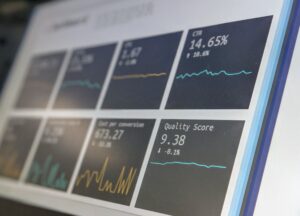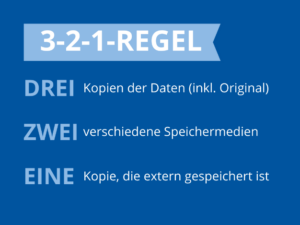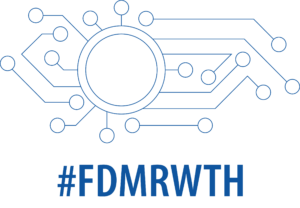Schlagwort: ‘FDM erklärt’
Workshop on the Management of Research Data (RDM II-Compact)

Source: Freepik
Research data management (RDM) is an essential part of modern science and research. In order to optimally prepare researchers at RWTH Aachen University for the challenges of handling research data, we offer the RDM II compact workshop once a year. This one-day hands-on workshop takes place on site at the University Library and is aimed at anyone who would like to deepen their knowledge of research data management.
RDM Explained – Introduction to Digital Preservation
It’s time again for our series ” RDM Explained”, in which we provide you with important terms and information for practical research data management.
In the present day, digital information is an integral part of our everyday lives. Whether messages in social networks, digital photos, documents, or videos – we want to access all this data for as long as possible. But permanent access to digital data is not only an important issue in the private sphere, but also in the research context. The long-term usability of research data is a prerequisite for scientific progress. This article therefore offers a brief introduction to digital preservation.
RDM Explained – What Is a Data Journal?

Describing Datasets. Source: Unsplash
We continue with our series “RDM explained”, in which we provide you with important terms and information for practical research data management. In addition to the classic scientific journals, there are also so-called data journals in scientific publishing. In contrast to the scientific journal, these refer exclusively to data. However, some people are still completely unfamiliar with this form of publication. For this reason, we would like to take a closer look at data journals on RWTH blog around the topic of Research Data Management (RDM).
RDM explained – How to Validate Data?

Source: Unsplash
As part of good scientific practice, research data should be stored for up to 10 years. In addition, more and more funding agencies expect information on where the collected data is stored. However, it is neither technically nor economically possible to store all data collected during a research project. Accordingly, it is necessary to carry out a data evaluation after a project has been completed. This forms the basis for deciding which data should or must be archived. Our new blog post gives a first insight into what should be considered when validating data.
2021 – Wir blicken auf die FDM-Höhepunkte des Jahres zurück
Die Getränke sind kaltgestellt und das Jahr 2021 neigt sich dem Ende zu – allerhöchste Zeit für den Jahresrückblick und die diesjährigen Höhepunkte im Bereich des Forschungsdatenmanagements.
2021 hat erneut gezeigt, dass das FDM von Jahr zu Jahr mehr Fahrt aufnimmt und sich dabei auch nicht von einer anhaltenden Pandemie bremsen lässt. Ganz im Gegenteil: Das digitale FDM-Angebot hat dadurch einen Aufschwung erlebt.
FDM erklärt – Wie erstellt man eigentlich sichere Passwörter?

Quelle: Unsplash
In unseren letzten Beiträgen der Reihe „FDM erklärt“ wurde bereits deutlich, dass die Medien, auf denen sich digitale Forschungsdaten befinden, Schwächen haben. Um Daten vor unberechtigtem Zugriff und Diebstahl zu schützen sind die Datenverschlüsselung und daran anschließend auch ein effektives Passwortmanagement wichtige Maßnahmen. In diesem Beitrag stellen wir die wichtigsten Regeln für das Erstellen eines Passworts vor.
FDM erklärt – Datensicherheit
Wenn Forschungsdaten nicht ausreichend vor unbefugtem Zugriff oder Datenverlust geschützt sind, läuft selbst das beste Datenmanagement ins Leere. Daher sind Backups und Maßnahmen zur Datensicherheit unerlässlich. Je nach Art der Forschungsdaten gelten unterschiedliche Anforderungen. So sollten sensible Daten besonders geschützt werden. Im Allgemeinen gibt es jedoch grundlegende Sicherheitsmaßnahmen, von denen alle, die mit Forschungsdaten arbeiten, profitieren können und um diese soll es in unserem neuen Beitrag der Reihe „FDM erklärt“ gehen.










